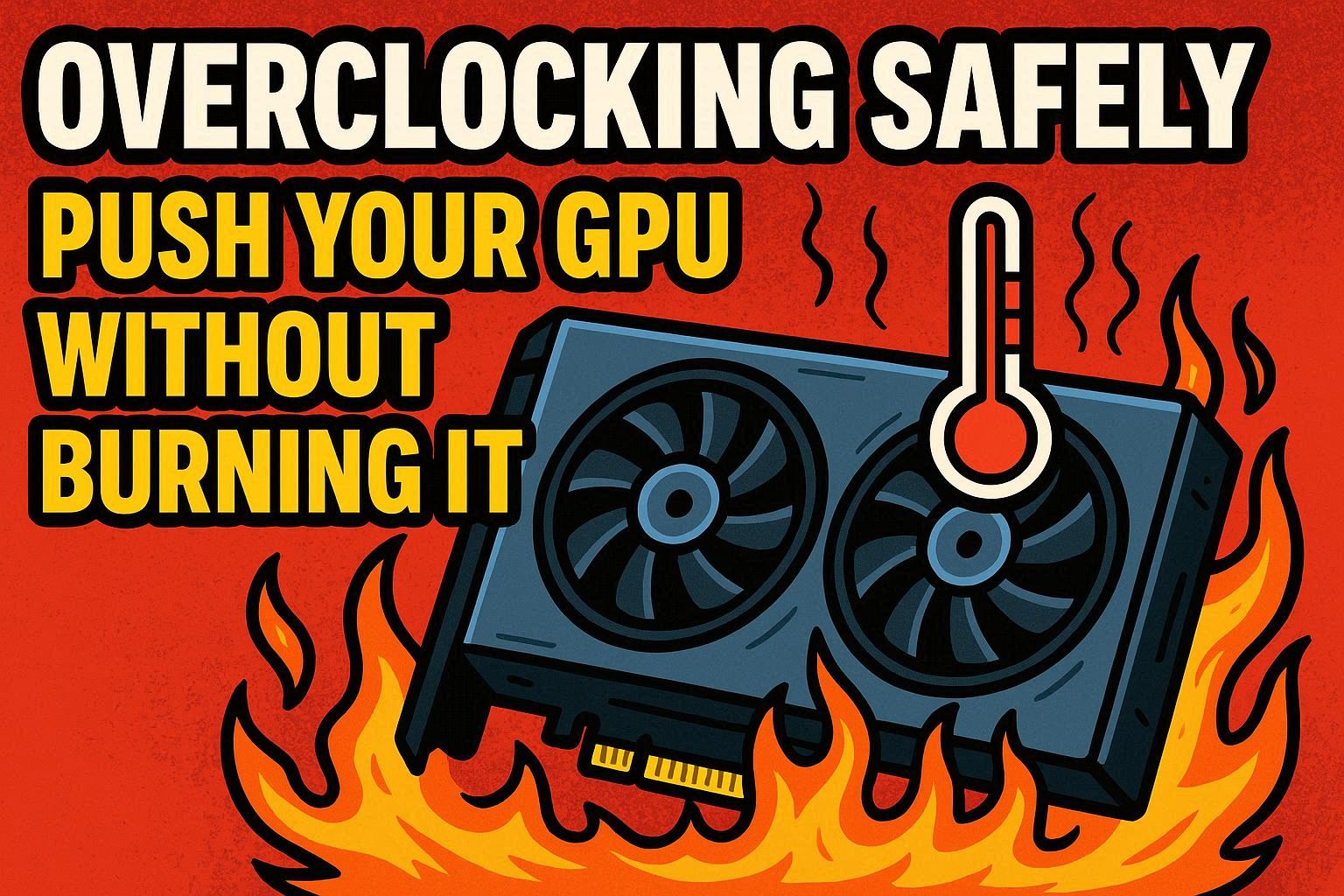When it comes to squeezing out extra performance from your graphics card, overclocking is the go-to trick for gamers, designers, and crypto enthusiasts alike. However, pushing your GPU too far can result in overheating, instability, and even permanent damage. Let’s explore how to overclock safely, boost FPS, and maintain system stability — without turning your GPU into molten silicon.
🧠 What Is GPU Overclocking?
GPU overclocking is the process of increasing your graphics card’s clock speed beyond its factory setting. This gives you higher performance in gaming or rendering but also increases power draw and heat generation.
In short:
- ✅ More speed = better performance
- ⚠️ More power = more heat
To learn more about the science behind GPU clocks, visit NVIDIA’s official overclocking guide or AMD’s tuning resources.
⚙️ Tools You’ll Need
1. Software
| Tool | Description | Rating (⭐) |
|---|---|---|
| MSI Afterburner | Most popular GPU overclocking tool | ⭐⭐⭐⭐⭐ |
| ASUS GPU Tweak III | Intuitive interface for ASUS GPUs | ⭐⭐⭐⭐ |
| EVGA Precision X1 | Tailored for NVIDIA cards | ⭐⭐⭐⭐ |
2. Monitoring Utilities
Keep an eye on:
- GPU Temperature (should stay below 85°C)
- Fan Speed
- Clock Frequency
- Voltage
Recommended tools: HWMonitor, GPU-Z, and HWiNFO.
🔧 Step-by-Step: How to Overclock Safely
Step 1: Benchmark First
Run a baseline benchmark using tools like 3DMark, Unigine Heaven, or FurMark. Record your FPS, temperature, and stability before making any changes.
Step 2: Increase Clock Gradually
Raise the core clock speed in increments of +25 MHz. Test after each increase. If your system crashes or artifacts appear, roll back by 10–20 MHz.
Step 3: Adjust Memory Clock
After the core clock is stable, increase the memory clock (VRAM). Again, do this in small steps — around +50 MHz.
Step 4: Stress Test
Run long stress tests (20–30 minutes). If your system holds up, you’re in the clear. If not, dial it back slightly.
🔥 Temperature Management Tips
| Cooling Method | Cost | Effectiveness | Notes |
|---|---|---|---|
| Stock Air Cooling | Low | ⭐⭐ | Limited control |
| Custom Fan Curves | Free | ⭐⭐⭐ | Good balance |
| Liquid Cooling | High | ⭐⭐⭐⭐⭐ | Best for hardcore overclockers |
Pro tip: Use tools like FanControl to set a custom fan curve — ramping up fan speed as temperature increases.
⚖️ Risks vs. Rewards
| Aspect | Pros | Cons |
|---|---|---|
| Performance | 5–15% FPS boost | Possible instability |
| Longevity | Better optimization | Shorter lifespan if overheated |
| Warranty | Often voided | — |
🧊 Final Verdict
Overclocking is like tuning a race car — it’s thrilling but risky. Follow safe practices, stay within thermal limits, and never skip monitoring.
Rating for Overclocking Potential:
⭐ Performance Boost – 4.5/5
⭐ Safety (with precautions) – 4/5
⭐ Ease of Use – 3.5/5
If done correctly, your GPU can handle more demanding games and workloads effortlessly. Just remember — patience is your best tool.
Want to dive deeper? Check out Tom’s Hardware Overclocking Guide for advanced tuning methods and community-tested profiles.
✅ Summary Checklist:
- Benchmark before changes
- Increase clocks gradually
- Monitor temps continuously
- Stress test regularly
- Stay under 85°C
Overclock safely, game boldly, and keep your GPU cool! 🎮💨


